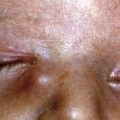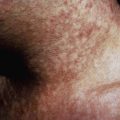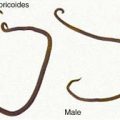Chapter 132 Infectious Complications of HSCT
Hematopoietic stem cell transplantation (HSCT) recipients experience a transient but profound state of immune deficiency. Immediately after transplantation, patients are particularly susceptible to bacterial and fungal infections, because neutrophils are absent. Consequently, most centers start prophylactic antibiotic or antifungal treatment during the conditioning regimen. Despite these prophylactic measures, most patients will develop fever and signs of infection in the early post-transplant period. The common pathogens include enteric bacteria and fungi such as Candida and Aspergillus. An indwelling central venous line is a significant risk factor for bacterial and fungal infections with staphylococcal species and Candida being the most frequent pathogens in catheter-related infections (Chapter 172).
Feuchtinger T, Matthes-Martin S, Richard C, et al. Safe adoptive transfer of virus-specific T-cell immunity for the treatment of systemic adenovirus infection after allogeneic stem cell transplantation. Br J Haematol. 2006;134:64-76.
Lilleri D, Gerna G, Fornara C, et al. Prospective simultaneous quantification of human cytomegalovirus-specific CD4+ and CD8+ T-cell reconstitution in young recipients of allogeneic hematopoietic stem cell transplantation. Blood. 2006;108:1406-1412.
Lilleri D, Gerna G, Furione M, et al. Use of a DNAemia cut-off for monitoring human cytomegalovirus infection reduces the number of pre-emptively treated children and young adults receiving haematopoietic stem cell transplantation as compared to qualitative pp65-antigenemia. Blood. 2007;110:2757-2760.
Perruccio K, Tosti A, Burchielli E, et al. Transferring functional immune responses to pathogens after haploidentical hematopoietic transplantation. Blood. 2005;106:4397-4406.
Safdar A, Rodriguez GH, De Lima MJ, et al. Infections in 100 cord blood transplantations. Medicine (Baltimore). 2007;86:324-333.
Socie G, Curtis RE, Deeg HJ, et al. New malignant diseases after allogeneic marrow transplantation for childhood acute leukemia. J Clin Oncol. 2000;18:348-357.






